The purpose of this guide is to explain which Subaru Forester years were the best and worst in terms of reliability, safety, and owner reviews.
In this analysis, we have synthesized years of owner feedback, safety ratings, and recall data from credible sources such as NHTSA, Consumer Reports, and Kelley Blue Book.
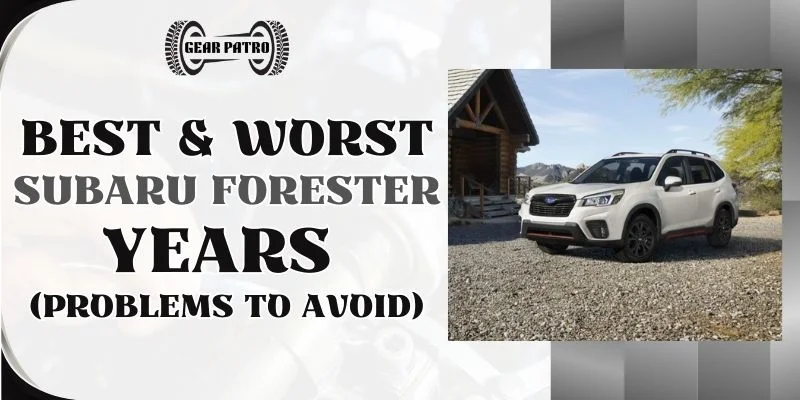
Find out which Forester years are most reliable and value-for-money, which Forester years are merely average, and what Forester years to avoid.
Let’s get started.
Subaru Forester Generations
First introduced in 1998, the Subaru Forester is a compact crossover SUV that brings together the benefits of a passenger car with the versatility of an SUV.
With its practicality, enhanced visibility, and Subaru’s signature all-wheel-drive system, it established Subaru’s safety and performance commitment.
Subaru Forester generations from 1998 to the present can be found in the following table:
| Generation | Years |
| 1st generation (SF) | 1998-2002 |
| 2nd generation (SG) | 2003-2008 |
| 3rd generation (SH) | 2009-2013 |
| 4th generation (SJ) | 2014-2018 |
| 5th generation (SK) | 2019-Present |
A significant shift in technology, design, and performance is often associated with the evolution of many automotive lines between generations. When considering a purchase, it is vital to understand these generational distinctions.
Subaru Forester Best, Neutral, and Worst Years
For our rankings to be accurate, we consider a variety of factors, including performance, safety, and owner satisfaction. The following factors are heavily weighed in our assessments:
In the following graph, ratings derived from the platforms mentioned earlier are combined to provide an illustration.
After categorizing our model years, we have tabulated them into three groups: best, neutral, and worst.
| Generation | Best Years | Neutral Years | Worst Years |
| 1st generation (SF) | 2000 2001 2002 | N/A | 1998 1999 |
| 2nd generation (SG) | 2003 2004 2005 | 20072008 | 2006 |
| 3rd generation (SH) | 2011 2012 | N/A | 2009 2010 2013 |
| 4th generation (SJ) | 2016 2018 | N/A | 2014 2015 2017 |
| 5th generation (SK) | 2021 2022 2023 | 2020 | 2019 |
The Neutral Years are ones in which performance and reliability are neither exceptional nor noticeably lacking. In spite of their average standing, they do not skew heavily towards the best or the worst.
The importance of understanding that some of these factors negatively affect a car’s ranking cannot be overstated. An example of a detractor is the number of NHTSA recalls. It is deemed less reliable the more complaints and recalls a model receives.
Let’s take a look at the best, neutral, and worst years.
Best & Worst Years for Subaru Forester 1st Generation (1998-2002)
Its first generation debuted in 1998, marking the start of the Subaru Forester’s automotive journey.
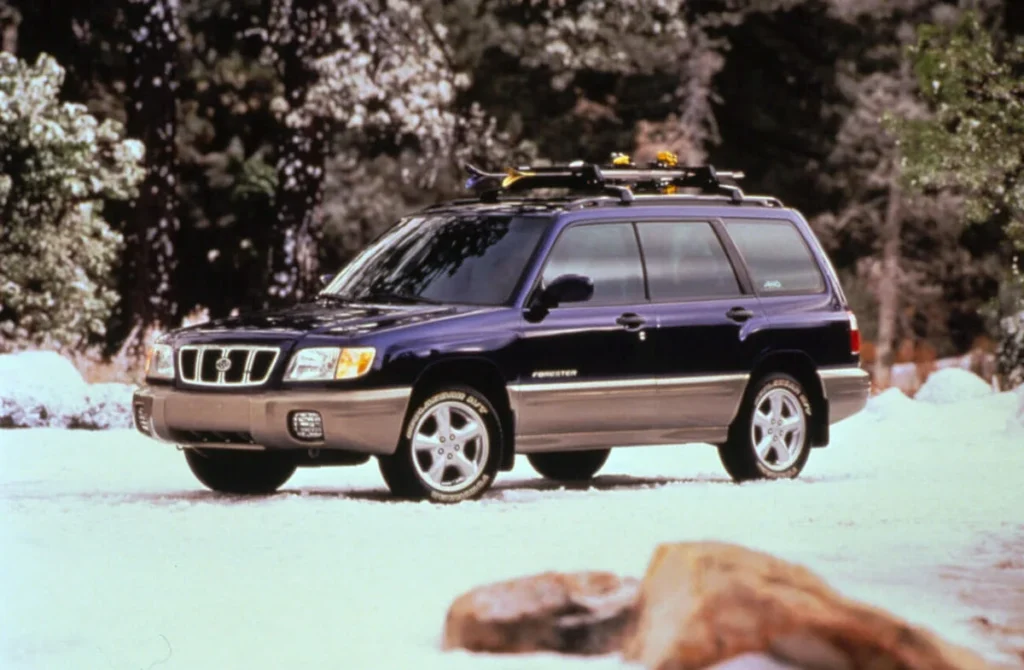
With its blend of practicality, ruggedness, and comfort of a passenger car, the Forester quickly established itself within the automotive market.
The Best Years: 2000, 2001, 2002
A maturation and refinement period marked the Forester’s development between 2000 and 2002. Enhanced powertrain options for Subaru’s 2.5-liter SOHC engine ensure smoother transmission shifts and better overall driving performance.
Consumers had the option of selecting from basic setup “L” to premium package “S”, which included enhanced audio systems, improved upholstery, and additional convenience features.
In addition to more robust braking mechanisms, these models had reinforced crash structures and advanced airbag systems.
Consumer Reports also praised these years’ fuel efficiency, putting 15 mpg for city driving and 26 mpg for highways.
There were still some faults with these models. Their reliability was tainted by persistent problems, particularly with the head gasket, transmission, and wheel bearings. The VIN number of a vehicle should be meticulously checked before purchase by prospective buyers.
The Worst Years: 1998, 1999
Among Forester owners, the 2.5l DOHC engine’s head gasket failures were a recurring problem in 1998.
It also had transmission hitches, including clutch chattering and failure to engage, an issue that was exacerbated in colder climates. Furthermore, rear wheel bearings failed prematurely, resulting in suspension challenges.
As a result of extended braking distances in colder environments, Subaru of America Inc. recalled significant numbers of models from 1998 and 1999.
Many of the aforementioned problems plagued the 1999 Forester as well. As head gasket failures persisted, wheel bearing wear and shifting difficulties became recurring issues, along with head gasket failures.
Owners were financially impacted by these issues. If the timing belt or water pump needs to be replaced simultaneously with the head gasket, the cost might rise to $1600 or $2300.
Best & Worst Years for Subaru Forester 2nd Generation (2003-2008)
In 2003, Subaru introduced its second-generation Forester series, a revision that demonstrated its commitment to refinement and advancement.
Subaru solidified the Forester’s position as a segment leader among crossover SUVs with a more prominent stance, a larger interior, and a reinforced platform.
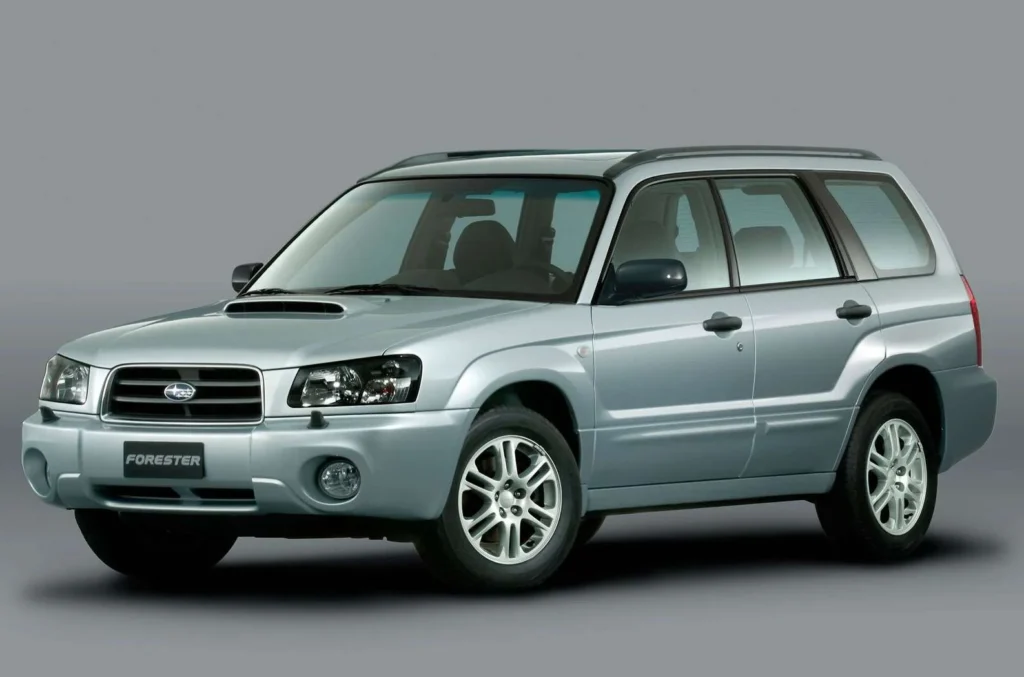
The Best Years: 2003, 2004, 2005
Natural aspirated X and XS trims with 2.5 L SOHC EJ253 engines were introduced in 2003, while turbocharged XT trims with 2.5 L turbocharged DOHC engines were introduced in 2004.
There was an advanced infotainment system as well as panoramic sunroofs on the premium trim “XS”.
In addition, Subaru’s celebrated Symmetrical All-Wheel Drive system became standard, providing a more stable and balanced drive, especially in difficult terrain.
Improved braking systems, more airbags, and reinforced chassis structures were among the safety advances.
According to Consumer Reports, owner satisfaction is increasing, particularly with 2003, 2004, and 2005 models, which scored above average.
Their average fuel consumption was also respectable, standing at 15 miles per gallon in the city and 28 miles per gallon on the highway.
The Neutral Years: 2007, 2008
Subaru Frontier models for 2007 and 2008 retained the same engine and trim options, trim levels, and technological features as earlier years, giving returning customers a sense of continuity.
In higher trims, advanced driver-assist systems and Symmetrical AWD systems were included as safety features.
Fuel lines have caused problems for some owners, particularly in colder climates. Subaru addressed the issue of a strong fuel smell due to excessive contraction of fuel lines during cold weather in later models.
As a result of exposure to snow-melting agents on roads, the front lower control arms were also recalled.
The Worst Years: 2006
Subaru Forester 2006 was plagued with several problems. There were a number of problems, especially in colder regions, including leaky head gaskets.
For many owners, this not only disrupted the performance of the vehicle, but also increased maintenance costs.
There were also several reports of a potent odor of fuel in cold climates, similar to that of the 2007 and 2008 models.
In places where winter road salt was heavily used, the recall regarding rusting of the lower control arms of the front suspension made matters worse.
In addition, there were sporadic reports about transmission inconsistencies, making the 2006 model year less favorable.
Best & Worst Years for Subaru Forester 3rd Generation (2009-2013)
With a new platform, enhanced interior ergonomics, and sharper design, the Forester’s third generation further blended the lines between a rugged SUV and a comfortable family car.
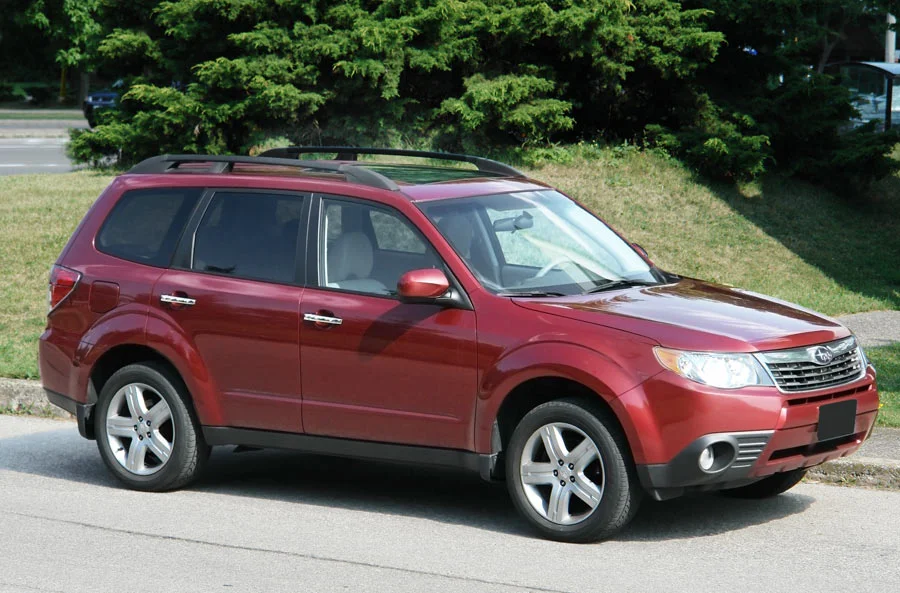
It is strongly recommended that you check the VIN before making any purchases, as this generation has received more NHTSA recalls and complaints.
The Best Years: 2011, 2012
With an average of 15 recalls between 2011 and 2012, the Subaru Forester demonstrated Subaru’s dedication to improving performance and reliability.
Among the trim levels were the 2.5X Limited, the 2.5X Premium, the 2.5X, and the 2.5XT Limited and 2.5XT Premium, both with turbochargers. There were three upholstery options, including leather, and two interior colors.
Combined with Subaru’s renowned Symmetrical All-Wheel Drive, the vehicle’s suspension setup delivers a comfortable and stable ride. According to the third generation’s fuel consumption, city driving consumed 16 mpg, and highway driving consumed 28 mpg.
Best & Worst Subaru Crosstrek Years
To improve performance on rugged terrains, Subaru tweaked the vehicle’s all-wheel-drive system and ground clearance.
In these years, both critics and customers were positive, with owner satisfaction scores high and relatively few issues reported.
The Worst Years: 2009, 2010, 2013
A series of challenges faced the 2009, 2010, and 2013 Forester models.
Forester models from 2009 received many recalls, the most significant of which involved frontal airbag inflators. As a result of this defect, sharp metal fragments could be projected from the inflators, posing a serious injury risk.
Several electrical malfunctions were reported by owners, particularly affecting warning indicators, dashboard displays, and windshield wipers.
The engine oil supply pipe was also recalled due to a potential break, which could cause significant engine damage if unaddressed.
Owners reported that the driver’s seat’s front left side weld on the 2010 Subaru Forester was prone to breaking, leading to the seat collapsing. There were also occasional issues with head gaskets, which were carried over from previous generations.
Forester’s 2013 model had fewer recalls than the 2009 model, but received lukewarm reviews. In states with heavy salt usage in winter, brake line corrosion stood out as a concern.
As a result, Kelley Blue Book rated this generation 4.2 out of 5, reflecting both praise and criticism.
Best & Worst Years for Subaru Forester 4th Generation (2014-2018)
Subaru Forester’s fourth generation reflects Subaru’s commitment to rectifying mistakes and adapting to the fast-paced evolution of the automotive industry.
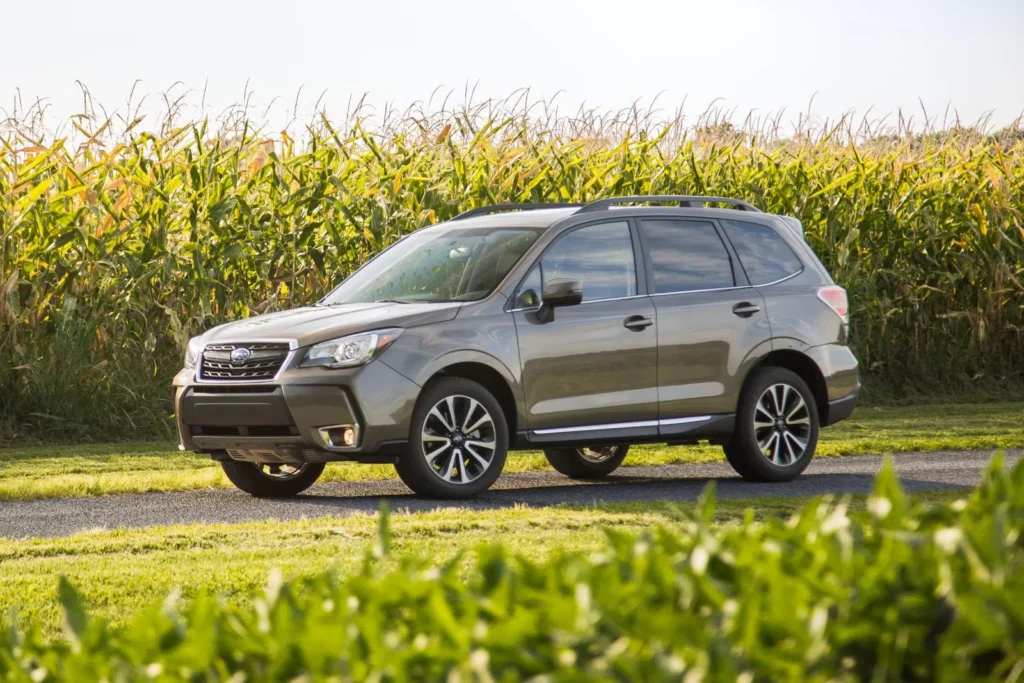
With the Forester, Subaru was able to combine urban sophistication and rugged off-road capability.
The Best Years: 2016, 2018
This generation’s standout Subaru Forester models are the 2016 and 2018.
Performance-oriented turbocharged 2.0XT (253 PS) is available in Premium and Touring models, and 2.5i is available in base, Premium, Limited, and Touring versions.
It offered lane departure warning, pre-collision braking, adaptive cruise control, and sway warning as part of Subaru’s Eyesight Driver Assist Technology.
The interior quality of these vehicles has also improved, with premium materials and state-of-the-art infotainment options. To meet the needs of urban commuters and highway travelers, the ride quality and cabin noise insulation were significantly improved.
In these years, the AWD system’s X-Mode feature was also a noteworthy addition, optimizing the performance on challenging terrains.
For city driving, the fourth-generation Frontier gets 18 mpg, while highway driving gets 35 mpg.
The Worst Years: 2014, 2015, 2017
Forester faced teething issues during its debut year as the first model of this generation. In some cases, the passenger side airbag warning light illuminates due to malfunctions in the Occupant Detection System (ODS).
The front suspension was also reported to wobble at higher speeds, causing the vehicle to shake. Excessive oil consumption was another common complaint, an issue Subaru had previously faced.
A number of the problems from the Forester’s predecessor were carried over to the 2015 model. Due to defective ODS, certain 2015-2018 models were recalled in 2019 due to airbag issues. Multiple engine problems were reported, primarily related to excessive oil consumption.
There was also a concern raised by owners about the vehicle’s erratic speed control, where it sometimes gained or lost speed spontaneously. However, Subaru hasn’t issued any recalls despite increasing complaints.
One of the most common complaints regarding the 2017 Forester was spontaneous cracks on the windshield. This defect has plagued several Forester models this generation.
Furthermore, Subaru of America Inc. has initiated a service program to inspect and replace, if necessary, the air conditioning condenser assembly in certain 2017 and 2018 models. As a result, corrosion was a likely cause of refrigerant leaks and compromised cooling efficiency within the condenser tube walls.
Best & Worst Years for Subaru Forester 5th Generation (2019-present)
Forester’s standing as one of the top compact SUVs has been strengthened by the 5th generation’s increased wheelbase and redesign.
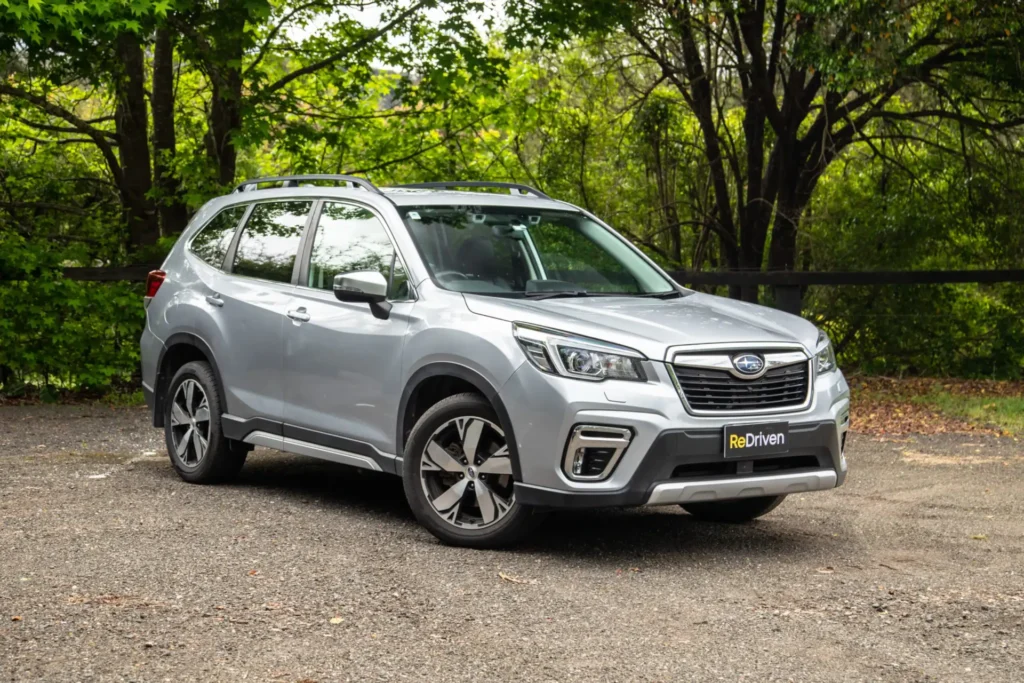
The Best Years: 2021, 2022, 2023
Subaru Foresters 2021, 2022, and 2023 are the pinnacle of Subaru’s engineering and design.
This model boasted an efficient and powerful 2.5-liter flat-four engine. Their outstanding balance between city driving and off-road performance was enhanced by Subaru’s symmetrical all-wheel drive system.
Initially, there are five trim levels to choose from: Basic, Premium, Sport, Limited, and Touring. An integrated 6.5-inch touchscreen is standard on the Forester’s Starlink Multimedia system.
EyeSight Driver Assist Technology was available on later models of this generation, providing features like adaptive cruise control and lane centering.
For city driving, fuel efficiency went up to 20 mpg, while highway driving went up to 38 mpg.
The Neutral Years: 2020
A transitional model can be seen in the 2020 Subaru Forester. Although the car’s design and performance were similar to those of its predecessors, it did not exhibit the same frequency of issues.
The refinement and feature enhancements of the subsequent years, however, didn’t quite reach its peak. This year, many owners were concerned about the persistent windshield crack issue, which caused spontaneous cracks to form.
In spite of these concerns, the 2020 Subaru Outback performs well in terms of safety, ruggedness, and reliability, making it a decent compact SUV choice.
The Worst Years: 2019
Cracked windshields were a frequent complaint by 2019 Subaru Forester owners. This issue affected more than just aesthetics, it also affected safety, especially with Subaru’s EyeSight cameras located in the front. The cost of replacing the windshield will probably exceed 1000 dollars, considering the EyeSight system.
There were also problems with the Thermostat Control Valve (TCV), which affected the vehicle’s ability to regulate its temperature. NHTSA reports Subaru hasn’t yet recalled that vehicle.
However, many owners have reported intermittent problems with the EyeSight safety system, which turns off unpredictably. There was also a problem with battery draining on Subaru Foerster models from 2016 to 2022.
Common Subaru Forester Problems
Subaru Foresters are reliable SUVs that are exceptionally capable off-road. The problem is, as you can see, that it has its fair share of flaws:
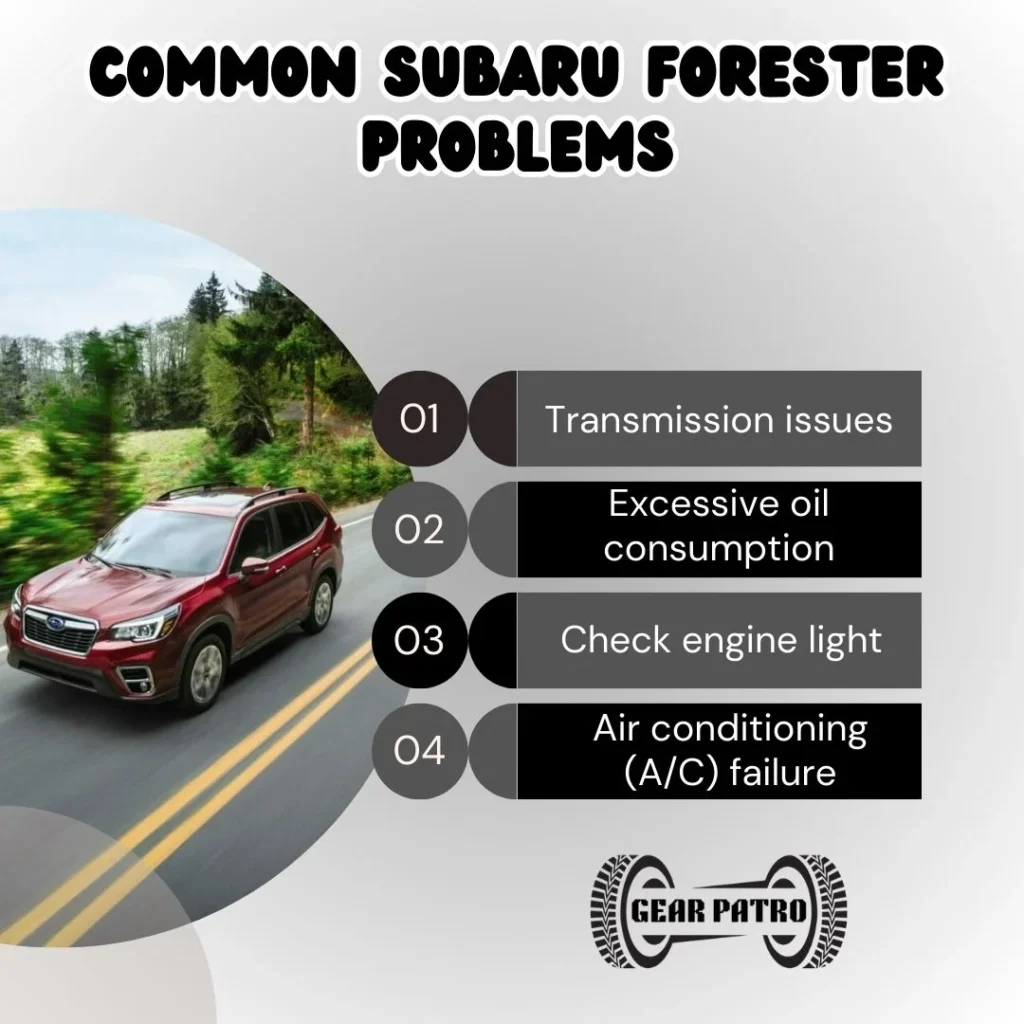
Transmission issues
Numerous problems have been reported with Subaru Forester models equipped with CVT transmissions. Several owners complained that their SUVs jerked and shuddered intensely. It was determined that insufficient CVT fluid was causing the transmission issues. Subaru issued a service bulletin addressing the issue.
Excessive oil consumption
Forester, among other Subaru models, experienced oil consumption problems. Prior to 2014, Foresters with a 2.5-liter engine were most likely to suffer from this problem.
Check engine light
The check engine light indicates a number of problems. In the Forester, however, a faulty oxygen sensor is most often the cause of the check engine light. In 1998, 2000-2007, and 2009-2014, Subaru has issued recalls for various models because of possible front O2 defects.
Air conditioning (A/C) failure
Forester model years are prone to A/C problems. Vehicle owners reported hot air coming from their A/C, eventually resulting in a faulty unit. The problem was caused by a bad condenser in the air conditioner.
Best & Worst Subaru Outback Years | Years To Avoid
Best & Worst Acura MDX Years | Years To Avoid
Best & Worst Subaru Impreza Years | Years To Avoid
Best & Worst Subaru Crosstrek Years
Frequently Asked Questions:
Which years of the Subaru Forester are recommended to avoid?
Subaru Forester model years 1998, 1999, 2000, 2001, 2003, 2010, 2011, and 2014 should be avoided by potential buyers. There are significant issues with these models, with the 2014 model being the most problematic.
What were the major issues with the first generation of Subaru Forester (1998-2001)?
The Subaru Foresters of the first generation, especially the 1998 model, were plagued by head gasket problems. Leaks often occurred around 50,000 miles due to a weak single-layer head gasket.
Why is the 2014 Subaru Forester considered one of the worst model years?
Subaru Foresters are infamous for engine failure, excessive oil consumption, suspension breakdowns, and gearbox issues. Repairs were costly and highly unreliable because of these issues.
Which Subaru Forester models are considered reliable and safe to purchase?
If you are looking to buy a Subaru Forester, the most recent model years are 2019, 2020, and 2021. Customer reviews for these models have been favorable, and they offer better connectivity and technology, as well as excellent safety ratings.
Are Subaru Foresters typically reliable?
Early Subaru Forester head gaskets are notorious for being troublesome, leading to costly repairs. Think carefully if you’re considering a Forester before 2015; several model years can cause problems.
How much does a used Subaru Forester typically cost?
Many markets have good availability of the Forester used car. There is, however, a high demand for compact crossovers. Due to this strong interest (compared to pre-pandemic conditions), second-hand Foresters are selling at a 20%-29% premium. In CoPilot Price Pulse for 2015 editions, the average asking price is $16,568. For the 2020 model year, this increases to $28,837.
Is the Subaru Forester a good car to purchase?
Subaru Foresters can serve as reliable transportation if you do your research carefully. Please keep in mind that not all model years are perfect. Before purchasing a Forester, find out which model is the most reliable.
Conclusion
When looking at the evolution of the Subaru Forester, some years stand out. It is recommended to prioritize the highest-rated Subaru Forester years for optimal performance and value, and to avoid the worst Subaru Forester years.
Do you have a favorite Subaru Forester year, and if so, why? Have you had any personal experiences with a particular model year?
